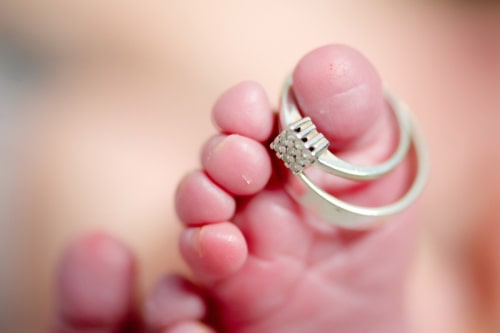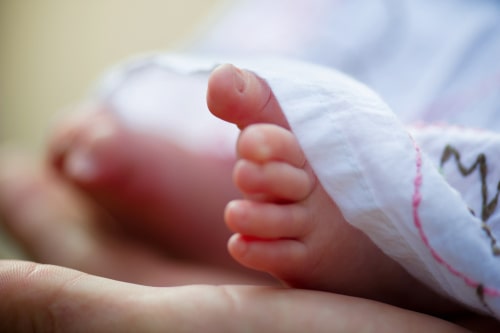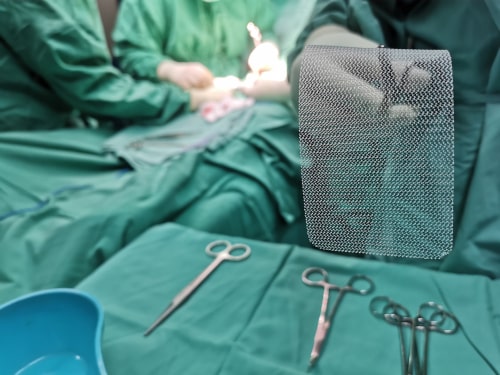Chicago, IL 60601
FREE CONSULTATIONS 312-462-4200
TOLL FREE 833-462-4200
Recent Blog Posts
How to Prove Forceps Led to an Injury During Birth
 Forceps are medical instruments used to assist in the delivery of a baby during childbirth. While they can be helpful in certain situations, improper use of forceps can lead to serious injuries to both the mother and the baby. If you suspect that forceps caused an injury during your child’s birth, it is important to understand how to prove this and seek appropriate legal action. An Illinois lawyer can help you get through this difficult case.
Forceps are medical instruments used to assist in the delivery of a baby during childbirth. While they can be helpful in certain situations, improper use of forceps can lead to serious injuries to both the mother and the baby. If you suspect that forceps caused an injury during your child’s birth, it is important to understand how to prove this and seek appropriate legal action. An Illinois lawyer can help you get through this difficult case.
Common Injuries Caused By Forceps
Forceps can cause a range of injuries when used improperly during delivery. It is important to be aware of the different types of injuries in case your child has more than one that you did not realize was connected.
Facial Nerve Damage
Forceps can put pressure on the baby’s facial nerves, leading to paralysis or weakness in the face. This type of injury may be apparent immediately after birth, with the baby showing signs of facial drooping or asymmetry. In some cases, the damage may be temporary, but in others, it can be permanent.
What to Do if You Experience Uterine Rupture from Negligence
 A uterine rupture is a rare but potentially life-threatening complication that can occur during pregnancy or childbirth. If you have experienced this traumatic event because of medical negligence, you should take immediate action to protect your health and legal rights. An Illinois lawyer can help you understand this maternal injury so you know your rights to address the issue.
A uterine rupture is a rare but potentially life-threatening complication that can occur during pregnancy or childbirth. If you have experienced this traumatic event because of medical negligence, you should take immediate action to protect your health and legal rights. An Illinois lawyer can help you understand this maternal injury so you know your rights to address the issue.
Always Seek Medical Attention First
Your health and well-being should always be the top priority. If you suspect that you have suffered a uterine rupture, seek emergency medical care right away. Symptoms may include severe abdominal pain, vaginal bleeding, rapid heartbeat, and signs of shock. Prompt treatment can significantly affect your recovery and prevent further complications.
Tips as You Manage Your Evidence
Having proof is vital for the most ideal outcome for your case. Some tips for effective documentation include the following:
Meconium Aspiration and Your Legal Options in Illinois
 The birth of a child is typically a joyous occasion for parents. However, complications during delivery, like meconium aspiration, can turn into a distressing experience. If your newborn has suffered from meconium aspiration due to medical negligence, an Illinois lawyer can help you understand your legal options.
The birth of a child is typically a joyous occasion for parents. However, complications during delivery, like meconium aspiration, can turn into a distressing experience. If your newborn has suffered from meconium aspiration due to medical negligence, an Illinois lawyer can help you understand your legal options.
What is Meconium Aspiration?
Meconium is a newborn’s first bowel movement, typically passed after birth. In some cases, the baby may pass meconium while still in the womb, leading to a condition known as meconium aspiration syndrome (MAS). When a baby inhales meconium-stained amniotic fluid, it can cause severe respiratory distress and lead to long-term complications.
Meconium aspiration can occur due to various factors. Some include prolonged labor, fetal distress, post-term pregnancy, and maternal health issues. Medical professionals are trained to promptly identify and manage meconium aspiration to minimize the risk of harm to the newborn.
3 Ways Speech Therapy Can Help a Child with Cerebral Palsy
 When a child has cerebral palsy, their coordination and movement do not develop typically. It can make it seem very hard to grow up in an environment that has been built for people who do not have CP. Many aspects of the disorder can prove challenging for a growing and developing child, but fortunately, advances in medicine have managed to find ways to significantly improve quality of life. This article will discuss one specific method for helping kids with CP navigate the world - speech therapy - and the ways it can help the child. Like all therapies, CP can be quite costly. If you are considering speech therapy for your child, speak with an experienced Illinois birth injury attorney to understand what financial assistance might be available to you.
When a child has cerebral palsy, their coordination and movement do not develop typically. It can make it seem very hard to grow up in an environment that has been built for people who do not have CP. Many aspects of the disorder can prove challenging for a growing and developing child, but fortunately, advances in medicine have managed to find ways to significantly improve quality of life. This article will discuss one specific method for helping kids with CP navigate the world - speech therapy - and the ways it can help the child. Like all therapies, CP can be quite costly. If you are considering speech therapy for your child, speak with an experienced Illinois birth injury attorney to understand what financial assistance might be available to you.
Improved Communication
There are many techniques employed during speech therapy that can help children with CP improve their communication skills. There are exercises aimed at building the muscles in the mouth and throat that are used when speaking. Others focus on practicing manipulating parts of the mouth - including the tongue, lips, and jaw - to move in a way that helps produce clearer sounds. For particularly challenging cases, a speech therapist might recommend the use of a communication device until speech is easier accomplished.
Cerebral Palsy and the Potential Benefits of Occupational Therapy
 While the exact cause of cerebral palsy is often unknown, the neurodevelopmental disorder is commonly a result of brain damage that happens before or during birth. There is no cure for it, but there are various therapies and interventions that have been successful in helping improve the child’s quality of life.
While the exact cause of cerebral palsy is often unknown, the neurodevelopmental disorder is commonly a result of brain damage that happens before or during birth. There is no cure for it, but there are various therapies and interventions that have been successful in helping improve the child’s quality of life.
One of these therapies is occupational therapy, which focuses on developing skills necessary for the performance of daily activities. Children who can be guided to conquer these skills gain more independence. While it can be costly, families of children with cerebral palsy often find that occupational therapy is worth every penny. This article will discuss various ways occupational therapy can benefit a child with cerebral palsy. If this interests you, speak with a skilled Chicago, IL birth injury attorney to see what options you have for covering the related costs of occupational therapy.
Do Black Women Have a Higher Risk of Maternal Death?
 Sometimes, living in the United States can feel like a cause for celebration. We live in the land of the free and the home of the brave, the land of opportunity and the American dream. Unfortunately, it is still a country in the real world, and reality is way less rosy. For example, while we enjoy generally good health care in this country, the system itself has some cultural issues. Statistics have been coming out showing that Black women have a higher risk of maternal death than others. These maternal mortality details can be explained by a variety of factors. If you have a loved one who died in childbirth, contact a Chicago, IL maternal death lawyer to discuss more.
Sometimes, living in the United States can feel like a cause for celebration. We live in the land of the free and the home of the brave, the land of opportunity and the American dream. Unfortunately, it is still a country in the real world, and reality is way less rosy. For example, while we enjoy generally good health care in this country, the system itself has some cultural issues. Statistics have been coming out showing that Black women have a higher risk of maternal death than others. These maternal mortality details can be explained by a variety of factors. If you have a loved one who died in childbirth, contact a Chicago, IL maternal death lawyer to discuss more.
Why Should Black Mothers Have a Higher Risk?
- Lack of medical professionals: There is a shortage of OBGYNs throughout the United States, leaving the medical community unable to meet the population’s demand. This issue is unfortunately even more severe in areas that are heavily populated by minority groups, where there is less access to quality hospitals, birthing centers, and especially post-partum maternal care professionals, which can be critical in the period following birth to limit maternal death.
Undiagnosed Preeclampsia in Illinois
 At times, pregnancy can feel like an incredible miracle. At other times, it might seem more like an endless risk. On the one hand, your body is creating life, and you get to witness the various stages of development. On the other hand, there are so many birth injuries, risks, and conditions that can be associated with a pregnancy that it can be overwhelming. While about 700 women die in the United States every year due to pregnancy and childbirth complications, it is estimated that about half of these could be prevented with proper medical treatment. One dangerous condition that can appear late in preeclampsia and requires swift medical attention is called preeclampsia.
At times, pregnancy can feel like an incredible miracle. At other times, it might seem more like an endless risk. On the one hand, your body is creating life, and you get to witness the various stages of development. On the other hand, there are so many birth injuries, risks, and conditions that can be associated with a pregnancy that it can be overwhelming. While about 700 women die in the United States every year due to pregnancy and childbirth complications, it is estimated that about half of these could be prevented with proper medical treatment. One dangerous condition that can appear late in preeclampsia and requires swift medical attention is called preeclampsia.
When detected, diagnosed, monitored, and treated, a woman with preeclampsia can recover. If the condition is ignored, the implications can be severe, with significant birth injuries. If your doctor failed to diagnose preeclampsia and you or your baby are suffering the consequences, a Cook County, IL birth injury attorney can advise you on your options for a medical malpractice lawsuit.
What to Know About Postpartum Hemorrhaging
 Welcoming a newborn baby into the world is a life-changing experience. Fortunately, modern medicine has come a long way, and some birth-related complications that used to be life-threatening are now resolved much quicker and safer in Western hospitals. Unfortunately, these medical advancements have not managed to completely eliminate all the risks associated with delivering a baby. Some women experience postpartum hemorrhaging, which is excessive bleeding after childbirth, and it can be dangerous with serious and lasting effects. It is one of the leading causes of maternal death. This article will discuss several of the most common causes of postpartum hemorrhaging. If you or a loved one have suffered from this medical complication, a skilled and compassionate Chicago, IL birth injury attorney can review your case and help you get the compensation you need to cover the related costs.
Welcoming a newborn baby into the world is a life-changing experience. Fortunately, modern medicine has come a long way, and some birth-related complications that used to be life-threatening are now resolved much quicker and safer in Western hospitals. Unfortunately, these medical advancements have not managed to completely eliminate all the risks associated with delivering a baby. Some women experience postpartum hemorrhaging, which is excessive bleeding after childbirth, and it can be dangerous with serious and lasting effects. It is one of the leading causes of maternal death. This article will discuss several of the most common causes of postpartum hemorrhaging. If you or a loved one have suffered from this medical complication, a skilled and compassionate Chicago, IL birth injury attorney can review your case and help you get the compensation you need to cover the related costs.
Tips for Making a Home and School Accessible for a Child With Cerebral Palsy
 Living with physical limitations can be challenging in a world that is built for fully able-bodied people. The world outside, with its shopping malls, amusement parks, theaters, and museums might not be as accessible as your child needs. If you have a child with cerebral palsy, you may want to make modifications so that she can at least feel at home and barrier-free in her own house. However, if you do not have cerebral palsy, it can be hard for you to think about all the ways your current home presents your child with challenges. This article will provide a list of several ways a home and school can be made more accessible and inclusive. If these seem like good ideas that could help your child, you should speak with a Chicago, IL birth injury lawyer to understand what financial assistance options you have to cover the costs of these home modifications.
Living with physical limitations can be challenging in a world that is built for fully able-bodied people. The world outside, with its shopping malls, amusement parks, theaters, and museums might not be as accessible as your child needs. If you have a child with cerebral palsy, you may want to make modifications so that she can at least feel at home and barrier-free in her own house. However, if you do not have cerebral palsy, it can be hard for you to think about all the ways your current home presents your child with challenges. This article will provide a list of several ways a home and school can be made more accessible and inclusive. If these seem like good ideas that could help your child, you should speak with a Chicago, IL birth injury lawyer to understand what financial assistance options you have to cover the costs of these home modifications.
Adaptive Devices and Equipment for People with CP
 Some people experience pregnancy and childbirth as an enchanting and miraculous period in their lives culminating in the addition of a cooing, healthy baby to their families. However, pregnancy truly is a time full of the unknown, with many mothers-to-be worrying about their babies’ development. Unfortunately, sometimes those worries are well-founded, and a child is diagnosed with cerebral palsy. While people with cerebral palsy can face serious symptoms and challenges throughout their lives, we are fortunate to live in a time of technological advancements that can help challenges be mitigated. This article will offer information about several adaptive devices and equipment for people with cerebral palsy, but if you have a child with this disorder, you should speak with an Illinois birth injury attorney to understand what rights your family might be legally entitled to.
Some people experience pregnancy and childbirth as an enchanting and miraculous period in their lives culminating in the addition of a cooing, healthy baby to their families. However, pregnancy truly is a time full of the unknown, with many mothers-to-be worrying about their babies’ development. Unfortunately, sometimes those worries are well-founded, and a child is diagnosed with cerebral palsy. While people with cerebral palsy can face serious symptoms and challenges throughout their lives, we are fortunate to live in a time of technological advancements that can help challenges be mitigated. This article will offer information about several adaptive devices and equipment for people with cerebral palsy, but if you have a child with this disorder, you should speak with an Illinois birth injury attorney to understand what rights your family might be legally entitled to.
Adaptive Equipment and Devices
Caused by damage to a developing brain, cerebral palsy can present differently in different people. However, some of the most common symptoms include poor muscle control, inability to maintain proper balance or posture, irregular reflexes, or poor muscle tone. While these symptoms can make it very hard to go through life in a world designed for more typically able-bodied individuals, technological innovations have created some amazing devices that can help people with cerebral palsy not only move around but thrive beyond the typical wheelchair. These include:





